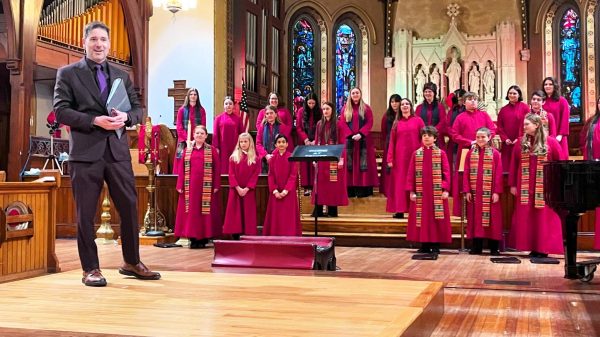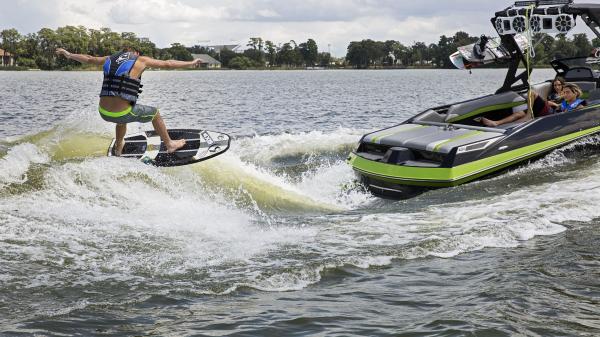KENT, Conn. — With operating costs rising everywhere, it is not surprising that local first responders are increasingly pressed when it comes to fundraising, so FirstLight Sustains grants have been particularly welcome at the Kent Volunteer Fire Department.

“We have greatly appreciated the support from First Light,” said Alan Gawel, chief of the local fire department. “They have been phenomenal.”
In the last 10 years, First Light, a clean energy company with properties on the Housatonic River in Kent, has donated nearly $50,000 to the KVFD to assist in its efforts to recruit and train new members, purchase radio equipment critical to their operations, and to purchase such things as turn-out gear and a new boat for swift water rescues.
The grants are available annually, according to Andy Brydges, director of community relations for First Light, who said the next round of funding starts in February. He said communities thinking of applying for a grant should be developing ideas now as to what they need.
“Some of these organizations have to run the ideas up the flagpole to get a reaction to them,” he said, “so now is the optimal time.”
Brydges said there is a “scoring mechanism” for determining who gets grants. “We do score points for innovative new ideas,” he said. “In Kent’s case, the first year was to fund training and recruitment efforts; this year it was for radios that work with the new state-wide telecommunications system.”
“We purchased two portable radios that were $2,500 each—and that the cheapest model,” Gawel said. “They can run up to $4,600. It’s a huge cost, but we have two in use and working.”
“Each year, we evaluate to see what our most important need is,” he continued. “We’ve been trying for several years to start our own capital fund but haven’t been able to fund it. The town saves for and gets our fire apparatus, but with rising costs for everything, we’ve not been able to fund all the things we need. We’re looking at different avenues to make it happen and these grants help.”
He said that the personal protection equipment (PPE) used by first responders—whether for water rescues or interior fire fighters—has a life expectancy that must be balanced against the safety of the first responders. It costs about $3,900 for PPE for each water rescue team member.
“It’s right around that for firefighting apparatus, with the exception that the firefighters share our self-contained breathing apparatus,” Gawel said. “The breathing apparatus is carried on the trucks, and we share it among whoever goes into a building.”
The state highly recommends, but does not require, two sets of PPE for each firefighter, making the equipment a major expense for local fire departments.
“KVFD just applied for a federal AFG (Assistance to Firefighters Grant) to purchase all new equipment for interior firefighters and we were rejected,” Gawel said. “They issued money to other priorities. The turn-out gear that has been purchased with a First Light grant is extremely helpful.”
Although the state does not yet require every company to have two sets of turn-out gear for each interior firefighter, Gawel says each department must have a plan to acquire the equipment. They also must have a means of cleaning the turn-out gear after each structural fire to wash away cancer-causing contaminants.

“Years ago, the products that burned were mostly wood,” he said. “Now, with all the chemicals and plastic in materials, it can be very toxic.”
Gawel said KVFD is fortunate to have the washer and dryer needed for this in its firehouse.
The First Light grants were first received when former first selectman Bruce Adams applied for one in conjunction with the fire department. Brydges said that application was received under a previous program that allowed larger allocations than FirstLight Sustains, which caps grants at $5,000 a year.
“Managing rivers takes a lot of coordination,” said Brydges, “and we are proud to have contributed $350,000 over last 10 years to first responder-types in our communities for a variety of uses. We have now consolidated a lot of different grant programs into FirstLight Sustains.”
Kent’s first applications were drawn from what was then called the Housatonic River Fund and were “stacked” to save for the purchase of a water rescue boat. “While the money was being saved, we looked at options—what boat might help us the most,” Gawel said. “Our research committee did a great job identifying a Whaley boat.”
Because the Housatonic River flows through Kent, KVFD is part of a regional swift water rescue team that includes Warren, Kent, Sherman and Gaylordsville. “Rescues on swift water are different than still water,” Gawel said. “The team members are all trained in rescues on moving water.”
The clean energy company has been helpful in KVFD’s training efforts by allowing river access for rescue simulations.
On Aug. 18, all the training was put to its largest test when the team was dispatched to southern Connecticut during the massive flooding that took place there. It was involved over the course of 12 hours in rescuing about 100 people, adults and children, left stranded by the flash flood waters.
“The Whaley boat is a huge asset to the fire department, the town—even the whole region,” Gawel continued.





























